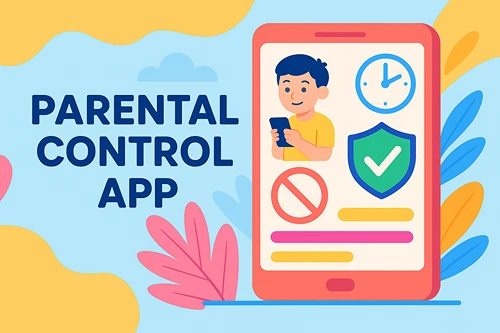3 Ways to Encourage Your Child’s Social Life Without Social Media
Social media has become the main way adults and children alike socialize in today’s world. While it can be a tool to connect with others, social media can also hinder our social lives, especially for our kids. Children need in-person interaction to develop healthy social skills and engage in physical activity.
Regular social media interactions also leave your child more susceptible to cyberbullying or encountering inappropriate websites, which could damage their emotional health and development.
First, Ensure Social Media Safety
Social media can provide some good. It helps your child stay updated with technology and enables them to participate in online games and discussions with kids like them worldwide. This can help them learn and grow without isolating themselves from other people. However, this is best supervised and limited or your child could experience the unsavory side effects of those activities.
You want your child to be safe, and their online safety is a part of making that happen. One of the best ways to ensure this is to make sure they know the best ways to interact online. Teach them never to give out their personal information or use a credit card without your permission. They should also never use their full name in chat threads or lie about their age when trying to enter a website, regardless of whether their friends use it.
One of the best ways to keep your kids safe online is by experiencing the websites they go on yourself. The more you know about a platform your child visits, the more secure you will feel about their interaction with it.
No matter how kids use social media, a lack of activities outside the web can harm their physical, mental and emotional health. Living their life solely online can lead to social awkwardness and isolation as they grow into adults. It can also cause communication breakdowns since they don’t learn how to respond to body language and other physical cues.
Here are three ways to develop your child’s social life without screens
1. Get Them Involved in Extracurricular Activities
As your child grows, they will develop interests and personality traits suited for various activities. This is the first step in moving your child toward a healthy mix of online and offline social activity. Encourage them to get involved in a club or sport they’re interested in.
They can get exercise by playing basketball, swimming or hiking, dig into their academic interests by joining a math team or history club, or experience their media hobbies in new ways by playing cards and board games regularly with friends.
Many activities take place on weeknights, giving them something positive to do after school away from the computer.
Interacting with others lets them practice the social skills they will need in adult life, such as having in-person conversations, resolving physical and emotional conflicts, moving their body, and getting fresh air. Other abilities include learning about keeping on schedule and making commitments, which can be much more flexible online than in the real world.
Moreover, before and after school care can help build your child’s social skills by participating in group activities. These activities provide opportunities to build stronger friendships. When children feel confident to make new friends, they develop more positive interactions, which can lead to a healthy adult social life, as you can learn more here.
2. Cater to Their Mental Health
Your child’s mental health is just as important as their physical health, so it’s necessary to nurture it the same.
Children who struggle mentally are less able to engage in interpersonal situations, leaving them feeling isolated and unfit for their activities. Poor mental health also affects their mood, making them appear annoyed or hostile to other kids. These social struggles can be one major reason why kids rely on online social spaces, rather than in-person.
Teach your children the importance of mental health and how they should talk about any thoughts or feelings that bother them. Assure them that getting specialized care is the same as treating a physical illness and nothing to feel embarrassed about.
The more age-appropriate knowledge they have about their mental health, the less likely they will try to bottle up their emotions or engage in unhealthy habits.
You can support your child’s mental health by encouraging healthy relationship with social media, healthy eating, exercising, and talking openly about feelings without yelling or judging. Ensure they can identify when they are struggling and help them find safe individuals to speak with if they are too embarrassed to talk to you about a situation.
3. Be An Example
You are your child’s biggest example of how to interact with the world, so it’s important to model positive behaviors for them.
Be active and participate in social activities outside of your work or phone. Treat others respectfully, set appropriate boundaries and limit your screen time.
Your children can also learn how to interact with peers by practicing similar interactions with you, so have fun together. Doing enjoyable things with your child can help you bond and show them how someone who loves and respects them should treat them. All these things help them decide who they will be as an adult.
Set a dedicated time to talk to your child every day, asking more in-depth questions than simply knowing how their day was. Small talks about their favorite food, new friends, and other personal matters help develop a stronger parent-child relationship. When your child feels that you’re interested in what they have to say, they’ll look forward to it every time instead of spending time on social media.
Encouraging Their Social Life
Your child has unique interests and hobbies. They may find similar peers and activities online, but it’s important to encourage social interactions away from the screen. Helping them learn in-person communication as a child sets them up to be happy, productive adults.
They’ll be more open in communicating with other people verbally. This is crucial in building healthy interpersonal relationships. This is especially true when they reach the adulthood stage. Your child will become more sensitive to other people’s feelings, as well as their own. Increased awareness about self and others is an integral aspect of developing good coping mechanisms. You can talk to a child expert to get personalized recommendations as to how you can best deal with your child based on a thorough evaluation.
 Author bio:
Author bio:
Cora Gold is the Editor-in-Chief of women’s lifestyle magazine, Revivalist. She strives to live a happy and healthy life with her family by her side.









